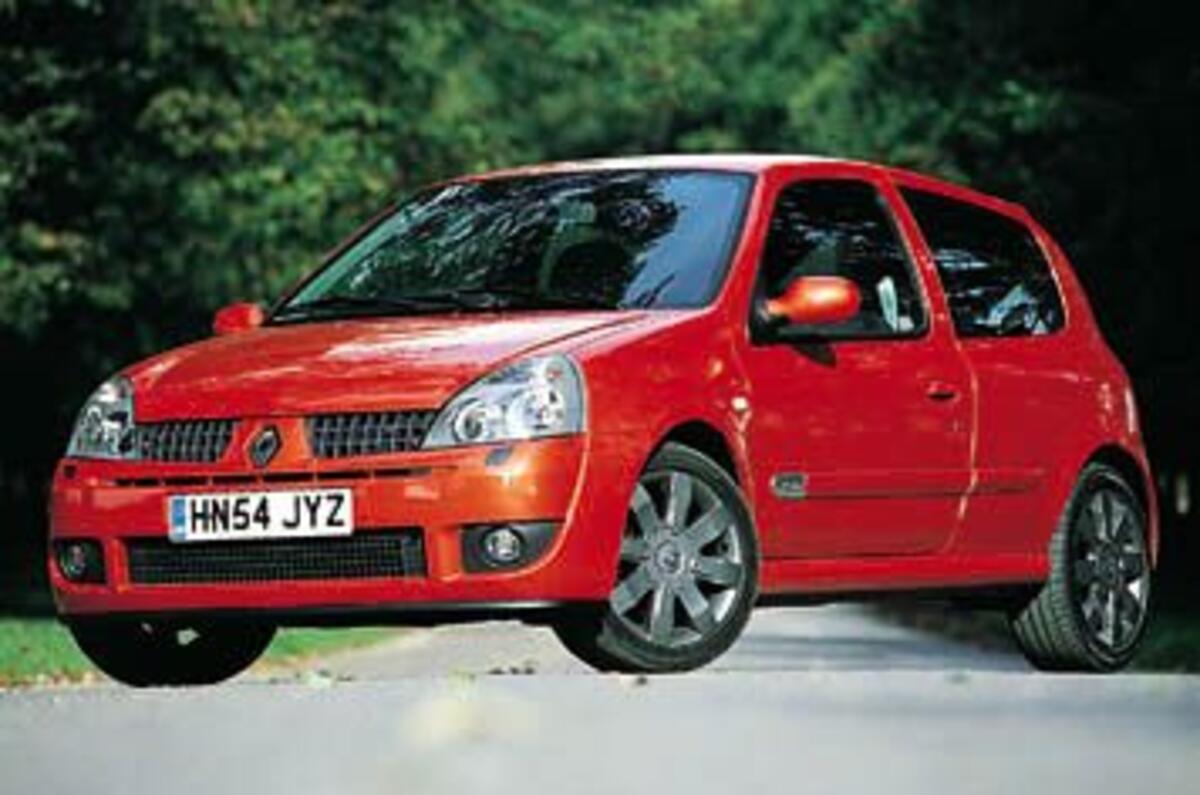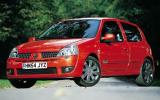Renault chose Manchester airport as the slightly unusual launch venue for the new Clio Renaultsport 182 Cup. It’s the final resting place of one of the British Airways Concordes, and nestled under its elegant wings is a compact ball of nuclear-orange hot-hatch energy that threatens to upstage this graceful old bird. The Clio Cup looks like it’ll hit Mach Two.
Once away from the Concorde and out into the surrounding countryside, the Clio completely kidnaps your consciousness. Renault believes the Cup to be two tenths of a second quicker to 60mph from rest than the regular 182 Sport. We achieved a staggering 6.4sec for that car, so factor in ideal conditions and a near-perfect getaway and you could be looking at a 6.0sec car. For £13,800.
This is the second Cup version of the Clio. The original Cup – based on the then range-topping 172 Sport – was a homologation special designed to allow Renault into Group N rallying. The new car is nothing more than a nice sales idea, and that’s worrying in itself: performance cars that lose their original competition raison d’etre can lose their focus with later iterations. Consider the relative normality of the 1600cc Peugeot 106 Rallye against the original, bespoke 1300cc screamer; the battle-hardened and deeply scary Porsche 993 GT2 versus the slick but soulless current GT2.
Reading the bumf on the 182 Cup isn’t encouraging, either. The old Cup shed 80kg from the standard car. This time the weight saving over the standard Sport is a paltry 20kg. That’s because anti-lock brakes make a welcome return to the standard-fit equipment list along with air conditioning. Eighty-five per cent of 172 Cup buyers opted to add air-con to their cars, so making it standard is an understandable decision by Renault UK, although one that goes against the pared-down ‘Cup’ ethos. Has the Cup, I start to wonder, gone a bit soft?
Not a chance. Even from the very first throttle application it’s clear that this is a very angry engine trapped within the confines of a small, light and once-innocent supermini bodyshell. There’s a delicious lack of inertia about the Cup that makes any sort of progress effortless and immediate, but it’s what happens above 5000rpm that demands your full attention. Above this line the Cup goes crazy, spearing forward with savage intensity until you throw another gear at it, and then again, and again. On an open dual carriageway it feels genuinely ‘grown-up’ quick; on a B-road it feels ballistic and really intense. All this from a freshly prepped car with only 400 miles on its odometer, too, so heaven knows what it’ll be like with a solid 20k under the wheels.
And it’s not just the Cup’s performance that’s raw – the sound of the 2.0-litre four-cylinder engine is fabulously rorty, with a pure induction bark overlaid with a subtle tappet-ish noise like the rustle of autumn leaves. Just like real engines used to sound. As to whether the Cup feels any quicker than the regular car it’s hard to say. Subjectively it feels marginally swifter, and even if this is purely pyschological it matters not – as long as it feels quicker, who cares?
If the Cup’s straight-line performance is full-on, then its behaviour in corners keeps the wick right up. As we said in our road test of the 182 Sport, the latest version of the hot Clio really is an absorbing and capable car to drive. The Cup gets the additional handling pack (that was fitted as an option on our road test 182) as standard, which means the gorgeous 205/45 R16 anthracite alloys, lower ride height, stiffer springs and dampers, strengthened hubs and revised suspension geometry.























Add your comment